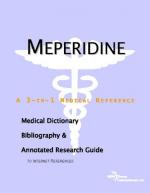|
This section contains 187 words (approx. 1 page at 300 words per page) |

|

In the early 1980s, a form of designer meperidine, known as MPPP, was being illegally manufactured. MPPP was also referred to as "synthetic heroin." In some cases, the chemical technique was not precise, and a toxic chemical byproduct, MPTP, was produced. MPTP is a known industrial toxin that can destroy nerve cells in certain portions of the brain
People ingesting this contaminated form of MPPP began exhibiting symptoms of Parkinson disease—rigidity of the muscles with uncontrollable twitching. The neurological damage caused by MPTP appears to be permanent. These cases were instrumental in initiating passage of the so-called Analogue Drug Laws. Prior to that time, someone who manufactured a novel (new) drug in an illegal lab could possibly evade some DEA regulations if the drug's specific chemical formula was not listed under the Schedule of Controlled Substances.
The Analogue Drug Laws were passed to cover...
|
This section contains 187 words (approx. 1 page at 300 words per page) |

|



